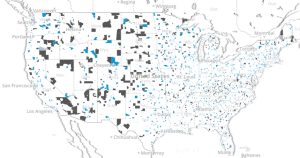Another of our occasional samplers on the unaffordability epidemic:
- As Seattle wrestles with housing unaffordability, an op-ed in the local paper recommends looking to Berlin!
Germany’s largest city, newly flooded by young people and immigrants, has a population of 85 percent renters and has introduced a new form of rent control — the “rental price brake,” which seeks to rein in rent increases. (Median rents have gone up 50 percent in six years, by one account.) And government has imposed other constraints – on renovations (can’t be too fancy without approval) and on conversion to vacation homes. Well, that may sound promising, but to what effect? Protesters are in the streets, we learn in the Wall Street Journal, as “Berlin’s Housing Problems Boil Over.”
- In Edina, Minn., a suburb of Minneapolis, 96 percent of the housing stock is unaffordable to a family of four earning $43,000 annually. So, the City Council is considering a form of inclusionary zoning with a buy-out provision. New developments would have to include 10 percent affordable units, or that requirement could be waived if the developer pays $220,000 per unit into a city fund to support affordable housing. Now, that’s not a new idea, but the buy-out figure looks rather high (Burlington’s is $100,000 per unit), and of course, there’s the concern that any new housing developed by the city not lump all the lower-income people together in their own blighted enclave.
- In Columbus, Ohio’s Franklin County, more than 24,000 people applied for Section 8 vouchers from an agency that is prepared to give out … 200, followed by 70 a month. That’s in a county where 13,000 vouchers are in use.
- In Miami, old people camped out overnight just so they could file applications to live in an affordable senior housing complex.
- In Portland, Ore., the newly declared “housing emergency” is expected to last at least a year.
- And in Palo Alto – we know, we know, this is Silicon Valley and expected to be unaffordable beyond imagining – a local man and college graduate who earns a “decent salary” is living with his parents because he can’t afford an apartment. He graduated from Palo Alto High 20 years ago, so he’s too old to be a Millennial! Here’s what he told the City Council about himself and his cohorts:
“All of us went to great colleges, great grad schools, and not one of us can live in the city.”














